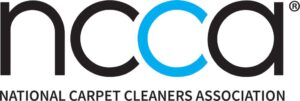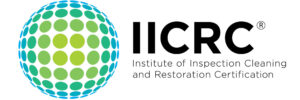British Standards
Unlike many firms, we work to industry standards and have NCCA, IICRC and Woolsafe approved standards.
Trustworthy and Family Run
We have been operating as a family firm since 2007 with many satisfied customers.
Free Inspection and Quotation
Our free initial inspection only takes a few minutes. Establishing the type of cleaning process required ensures your complete satisfaction.
Persian Rugs are available in a variety of styles
Our passion lies in preserving the beauty and integrity of these timeless pieces through meticulous cleaning and restoration services. With our expert care and attention to detail, we ensure that every Persian rug entrusted to us receives the utmost care, returning it to its original look. Step into luxury and entrust your cherished Persian rugs to our experienced hands.
- Floral Persian rugs called Tabriz.
- Geometrical called Heriz.
- Medallion and corner pattern on an ornately patterned floral field is called Kashan.
- Gabbeh Rugs: Woven with the Tribal influence by Qashqai & Luri weavers, these have simple patterns. They are made of cotton and local handspun wool. Gabbeh rugs are thick and coarse.
- Isfahan Rugs: Made of silk or wool, these have very balanced, symmetrical patterns. Commonly it would have single indigo, rose or blue medallion surrounded by vines on a lightly coloured background.
- Nain Rugs are very finely woven with a high knot count of 300 to 700 knots per square inch. The patterns are intricately entwined branches with tiny flowers, blue or green, on an ivory background.
- Mashad Rugs is identified by a large lone Shah Abbasi medallion in the center surrounded by elaborate floral motifs in a curvilinear design.
- Balouchi Rugs with nomadic tribal geometric patterns woven of sheep wool are generally small in size. They are usually dyed blue or red; the edges use goat or camel hair in beige or brown.
- Qum Rugs are high-quality rugs traditionally woven in silk or cotton, also known as Koum, Kom, Qhum or Ghom are woven in Qom province. The patterns range from a combination of flowers and birds, medallions and gardens, hunting scenes in the dark blue, reddish-brown or orange.
How We Clean Your Persian Rug
When it comes to cleaning a Persian rug it needs to be handled with care due to its delicate nature. To work with its delicate nature, we follow these steps below to clean your Persian Rug effectively and safely:
Initial Inspection and Assessment
Our team of specialists with over 15 years of industry experience carefully inspect the rug to evaluate its condition, identify the construction and fibre content, look at any specific stains or areas of concern that may require rug repairs or rug stain removal treatments etc. We also check the dye sites of the fibres to adjust our cleaning chemistry to suit the rug’s requirements. This assessment helps us determine the best cleaning approach for your rug.
Dust and Debris Removal
Once we have determined the best approach for your rug, we will start by removing dry soils through a mechanical or hand dusting process. This is followed by vacuuming and using controlled compressed air for valuable and delicate rugs. The cleaning in our Persian rug studio allows this process to be done before solvable soil cleaning.
Pre-Treatment of Stains
During our initial assessment, any spots or stains identified will be dealt with, if possible, by eco-friendly and natural product ranges. For some more challenging areas of concern, our expertise with detailed chemistry allows us to work on these areas, respecting and utilising the dyes and fibre content, protecting the run and removing the stains.
Hand Washing & Rinsing
In our Persian rug cleaning studio, we commonly use water-based processes to clean rugs. Water is a great way of allowing soft agitation, through lubricating the fibres in our wash bays. Submersible cleaning is an industry process, however, this is not always the correct process mainly due to delicate rugs, fibre content, dye problems or many other unforeseen issues.
To combat this we have a variety of methods to suit all rug types that are tailored to every individual rug.
Drying- Speed drying is almost a must when water-based processes are used. This allows us to control and prevent issues caused by delayed drying such as cellulosic browning, dye migration and fibre texture issues. Our drying room in our cleaning workshop controls the humidity and airflow for safe and monitored drying.
Optional Protective Treatment
For added protection, we offer an optional treatment that creates an invisible barrier on the rug’s surface. This helps guard against future stains and damage, prolonging the rug’s life. This application is Woolsafe-approved and is proven to prevent soiling and staining.
Inspection – All rugs are inspected and checked for moisture content. It is common for rugs to dry with improved results, however, further treatments can improve the rug’s appearance. So after every treatment, we assess each rug treated, checking the moisture content before the rugs are rolled or folded for customer return.
Some rugs do require time to achieve the desired results as fibres can be extremely delicate to cleaning processes. So, we as a Woolsafe Approved Service Provider, aim to obtain the best cost-effective results with care and commitment.
Persian rug cleaning is available from our specialist team of hand-crafted cleaners offering all sorts of solutions to rugs of all sizes and conditions.
If you have any other questions about our Persian rug cleaning process, then be sure to get in touch with us or call us on 01473 396036 to answer any specific questions you may have.
Our Testimonials



